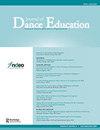不伤害:社区参与式学习应用于社区舞蹈的经验教训
Q1 Arts and Humanities
引用次数: 0
摘要
ABSTRACT 在考虑舞蹈中的健康问题时,我们通常会想到解决表演者面临的与精神或身体健康相关的挑战,但在考虑社区舞蹈时,还需要考虑确保参与舞蹈节目的市民和邻居的健康。舞蹈教育培训在培养学生成功参与互惠互利、文化上可持续的社区舞蹈方面仍存在差距。本文从社区参与式学习(Community-Engaged Learning,CEL)领域提出了一些关键概念和做法,以补充传统的舞蹈教育。文章探讨了批判性反思、重新分配权力和建立真实关系等概念。从 "社区参与式学习 "中汲取的经验与舞蹈教育相结合,可以帮助我们培养学生最大限度地减少无意伤害,并增加参与社区舞蹈的乐趣。本文章由计算机程序翻译,如有差异,请以英文原文为准。
Do No Harm: Lessons from Community-Engaged Learning Applied to Community Dance
ABSTRACT When thinking of wellness in dance, we often think about addressing mental or physical health-related challenges facing performers, although when looking at community dance, there are additional considerations to ensure the wellness of citizens and neighbors participating in dance programming. Gaps remain in dance education training to prepare students to be successful in authentically engaging in mutually beneficial, culturally sustaining, community dance. This article offers key concepts and practices from the field of Community-Engaged Learning (CEL) to supplement traditional dance education. The concepts of critical reflection, redistributing power, and authentic relationship-building are explored. Gleanings from CEL, in combination with dance education, can support us in preparing students to minimize unintentional harm, and amplify the joys of engaging in community dance.
求助全文
通过发布文献求助,成功后即可免费获取论文全文。
去求助
来源期刊

Journal of Dance Education
Arts and Humanities-Visual Arts and Performing Arts
CiteScore
1.80
自引率
0.00%
发文量
47
 求助内容:
求助内容: 应助结果提醒方式:
应助结果提醒方式:


